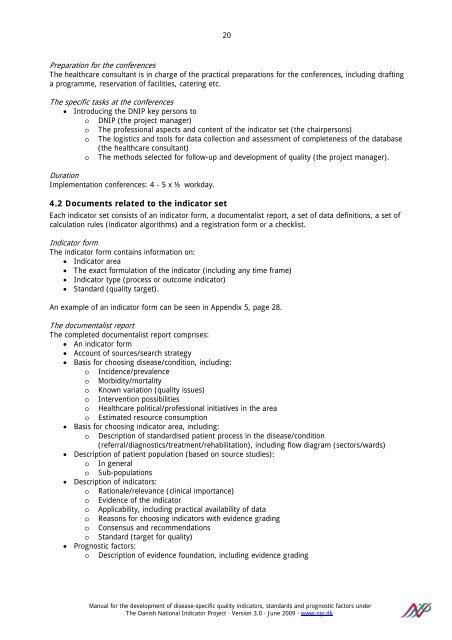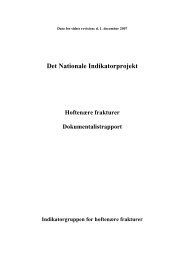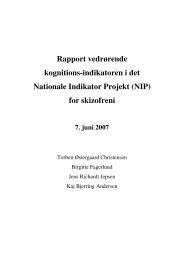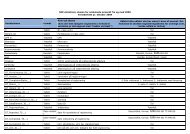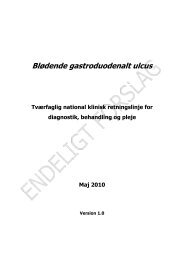The Danish National Indicator Project - NIP
The Danish National Indicator Project - NIP
The Danish National Indicator Project - NIP
You also want an ePaper? Increase the reach of your titles
YUMPU automatically turns print PDFs into web optimized ePapers that Google loves.
20<br />
Preparation for the conferences<br />
<strong>The</strong> healthcare consultant is in charge of the practical preparations for the conferences, including drafting<br />
a programme, reservation of facilities, catering etc.<br />
<strong>The</strong> specific tasks at the conferences<br />
• Introducing the D<strong>NIP</strong> key persons to<br />
o D<strong>NIP</strong> (the project manager)<br />
o <strong>The</strong> professional aspects and content of the indicator set (the chairpersons)<br />
o <strong>The</strong> logistics and tools for data collection and assessment of completeness of the database<br />
(the healthcare consultant)<br />
o <strong>The</strong> methods selected for follow-up and development of quality (the project manager).<br />
Duration<br />
Implementation conferences: 4 - 5 x ½ workday.<br />
4.2 Documents related to the indicator set<br />
Each indicator set consists of an indicator form, a documentalist report, a set of data definitions, a set of<br />
calculation rules (indicator algorithms) and a registration form or a checklist.<br />
<strong>Indicator</strong> form<br />
<strong>The</strong> indicator form contains information on:<br />
• <strong>Indicator</strong> area<br />
• <strong>The</strong> exact formulation of the indicator (including any time frame)<br />
• <strong>Indicator</strong> type (process or outcome indicator)<br />
• Standard (quality target).<br />
An example of an indicator form can be seen in Appendix 5, page 28.<br />
<strong>The</strong> documentalist report<br />
<strong>The</strong> completed documentalist report comprises:<br />
• An indicator form<br />
• Account of sources/search strategy<br />
• Basis for choosing disease/condition, including:<br />
o Incidence/prevalence<br />
o Morbidity/mortality<br />
o Known variation (quality issues)<br />
o Intervention possibilities<br />
o Healthcare political/professional initiatives in the area<br />
o Estimated resource consumption<br />
• Basis for choosing indicator area, including:<br />
o Description of standardised patient process in the disease/condition<br />
(referral/diagnostics/treatment/rehabilitation), including flow diagram (sectors/wards)<br />
• Description of patient population (based on source studies):<br />
o In general<br />
o Sub-populations<br />
• Description of indicators:<br />
o Rationale/relevance (clinical importance)<br />
o Evidence of the indicator<br />
o Applicability, including practical availability of data<br />
o Reasons for choosing indicators with evidence grading<br />
o Consensus and recommendations<br />
o Standard (target for quality)<br />
• Prognostic factors:<br />
o Description of evidence foundation, including evidence grading<br />
Manual for the development of disease-specific quality indicators, standards and prognostic factors under<br />
<strong>The</strong> <strong>Danish</strong> <strong>National</strong> <strong>Indicator</strong> <strong>Project</strong> · Version 3.0 · June 2009 · www.nip.dk


